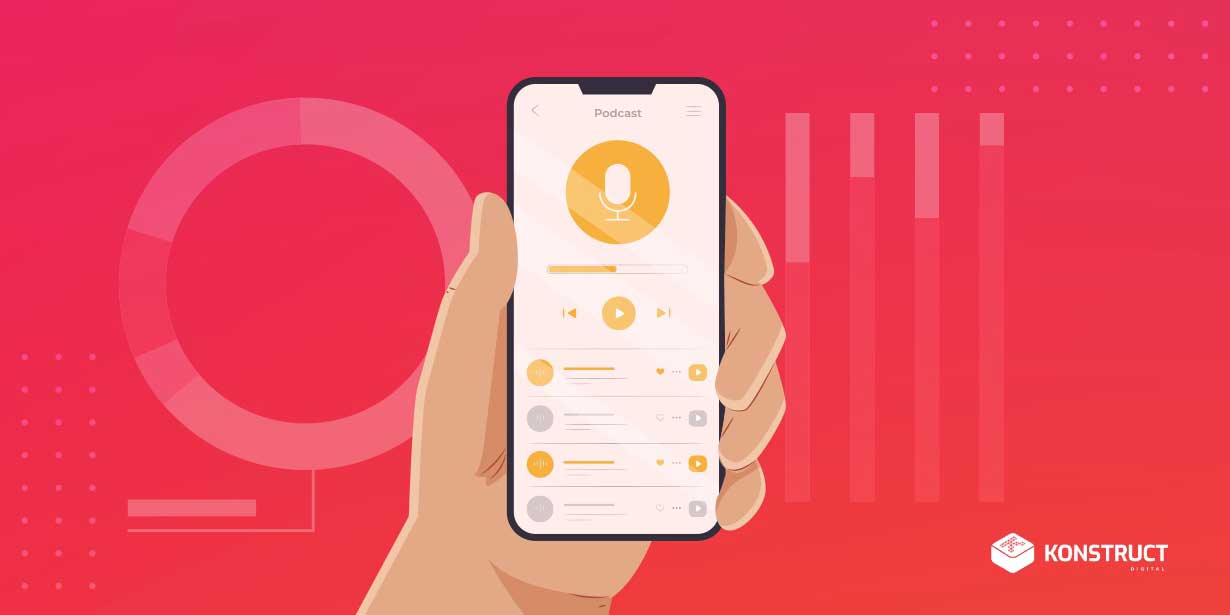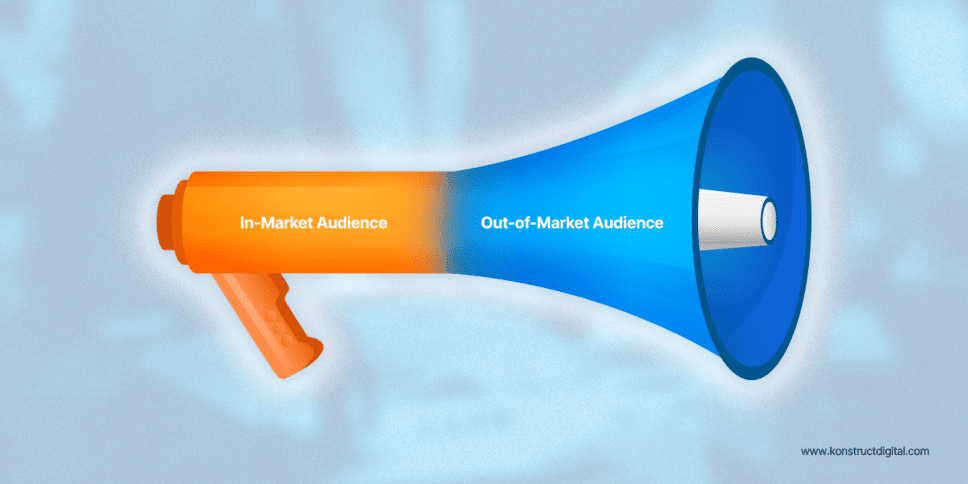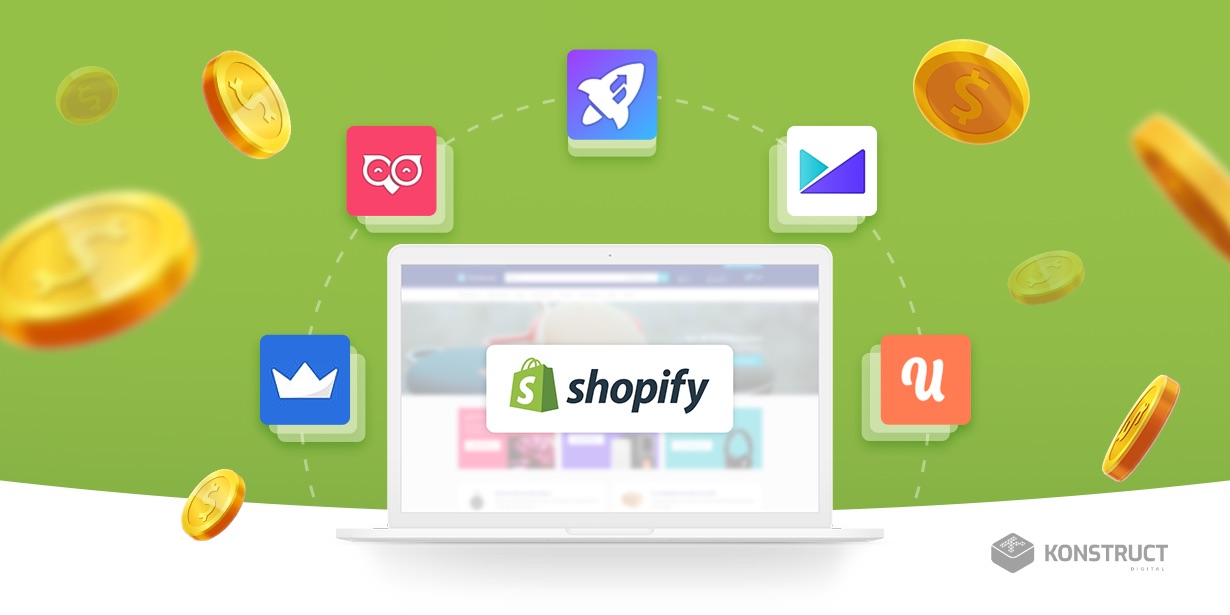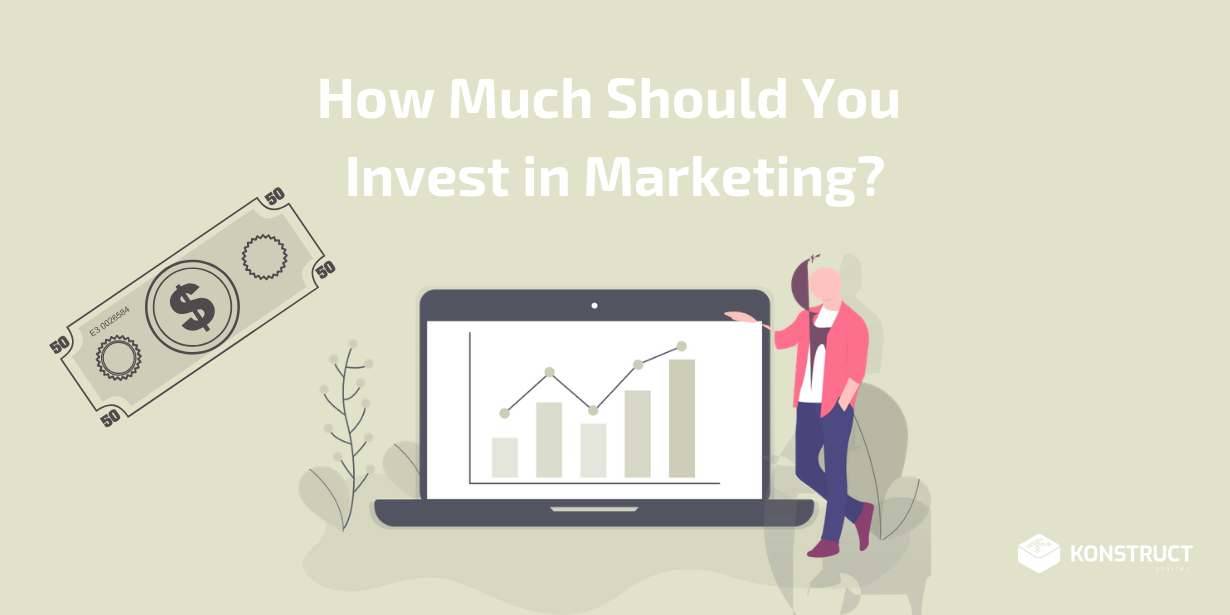Have you been struggling to get sites to link to your blogs or articles? Your blog outreach isn’t working as well as it used to? Tried and true link building tactics have become oversaturated and aren’t working as well as they used to? Sorry that’s happening! Or, maybe you’re just interested in this topic; if so, hey! Glad you’re here. Either way, this article is all about an image link-building strategy that you should probably start taking advantage of. The best part? Once you understand the process it’s very hands-off. Say goodbye to those awkward outreach emails. Let’s dive in.
The Importance of Building Links Through Custom Images
Leveraging image link-building is an underutilized area that more people should incorporate into their content and design strategy. Since it’s pretty hands-off and straightforward, it’s not hard for websites to naturally attract links and build up domain authority.
If you’re writing blogs or articles and looking to naturally build links (I mean, why else would you be reading this), you should do some keyword research and decide if there’s an actual image ranking opportunity. Consider these three things:
- What does the search volume look like?
- Does it look like there is an actual image opportunity?
- How difficult would it be for your team (or just you) to get together the type of images that you need?
Writers are looking for image assets they can use to add flavour to their content, demonstrate concepts, and back up key points all the time. This is the perfect opportunity to make their life easier AND gain a link at the same time.
Things to Consider When Designing Linkable Images for Blog Posts
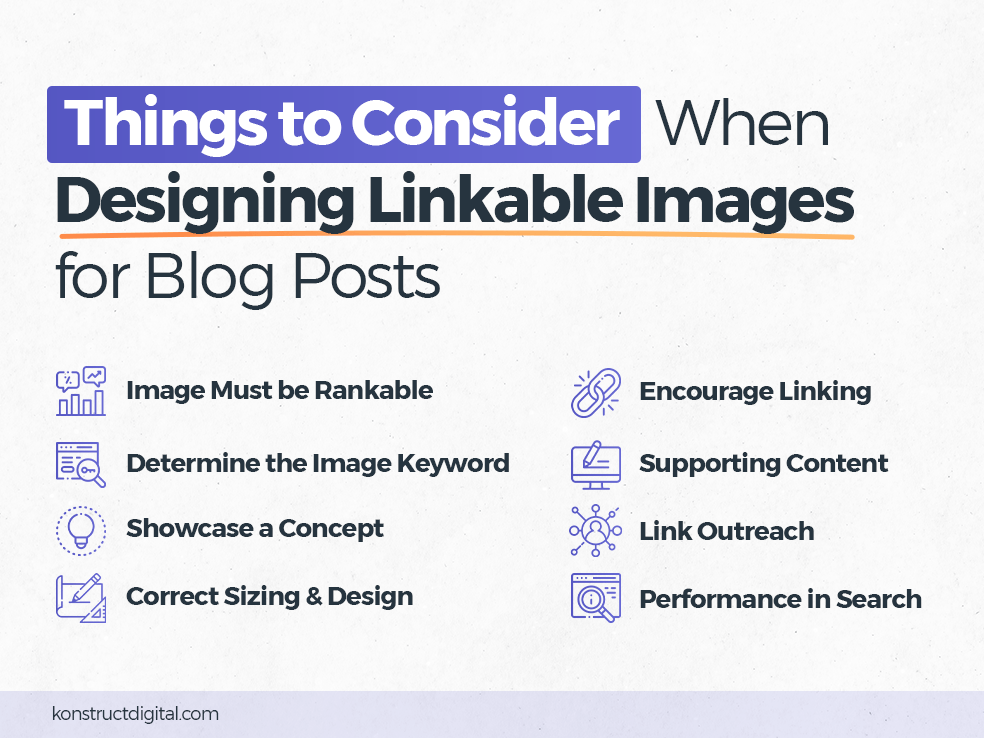
You know the feeling when you make something amazing and no one notices? Well unfortunately you can’t just expect any image to rank and attract links. The following are things to consider when designing linkable images.
Image Must be Rankable
The first thing to do is make sure someone is actually searching for the image. If no one is, you’ll struggle to build natural links. Determining the image rank requires a little help from your best friend, Google, and your intuition. If you’re thinking, “Oh crap, my intuition sucks”, first, I’m sorry; second, here are some clues you can use:
- The search query itself; see if someone is searching for a term that includes the words “infographic”, “map”, “visualization”, or something that indicates they’re looking for something visual.
- Discover what’s already ranking; search your keyword and using Google Image Search, see what types of images are ranking already.
Overall, you want to think about the image and its value. If someone is searching for an image because they’re writing their own article or need to use it for a presentation, make sure it provides actual value and you can imagine it on a presentation slide. Otherwise, people will pass over your image for another.
Determine the Image Keyword
There are a few aspects to determining the keyword of your image.
Not all of the images on your page should be optimized for the same keywords because then they’ll just try to compete with one another. Use your primary keyword on the image that makes the most sense with the content. Then, find secondary keywords that align with the content but aren’t the same as your primary keyword.
For example, if you were writing an article on “what is SEO?” and had a section that was about “how SEO works”, you’d likely want the image in that section to optimized for “how SEO works” rather than “what is SEO”. Topical relevancy in the content is an important ranking factor.
Showcase a Concept
When you’re designing custom images for your blog, the most important thing is that it’s something someone would actually want to link to. Obviously…
At times, people (we do this often too, so no, I’m not saying it’s necessarily bad) just use filler images in their blogs. You know the ones – they’re a bit generic and often look stock-photo-y. Sometimes they divide up different sections of the article and maybe have some visual flair. Truthfully, these images will not help your blog rank or provide any additional value beyond some flair.
Instead, you want to create high-quality images that can tell a story or showcase a concept on its own that makes someone go, “I have to include that in my blog”. Commonly, diagrams, stats, infographics, really anything data-driven, are borrowed and linked to the most, so incorporating those custom image types will naturally help build links.
Here are examples of some great Konstruct custom images that have naturally built backlinks:
From our blog, How Much Does it Cost to Advertise on Facebook in 2022?
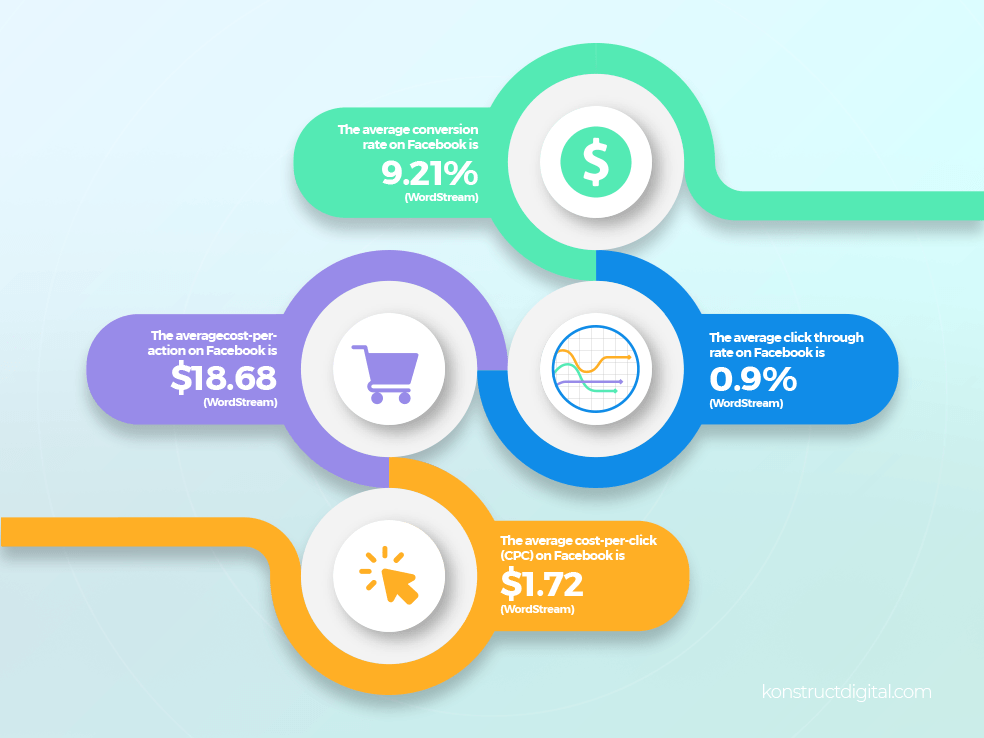
From our blog, The Ultimate: 50+ Surprising Shopify Statistics
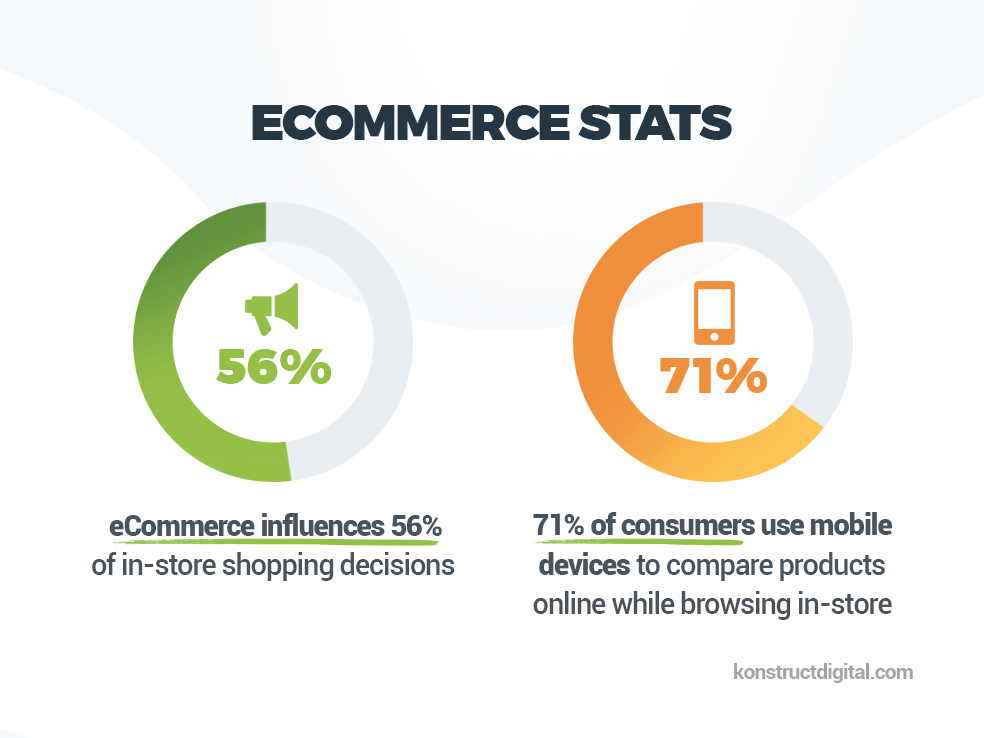
Here are some examples of what I like to call “filler” images. They don’t really provide any useful information–but they add some flavour to the content.
From our blog, How to Promote Your Shopify Store: 5 Sure-Fire Strategies for Success
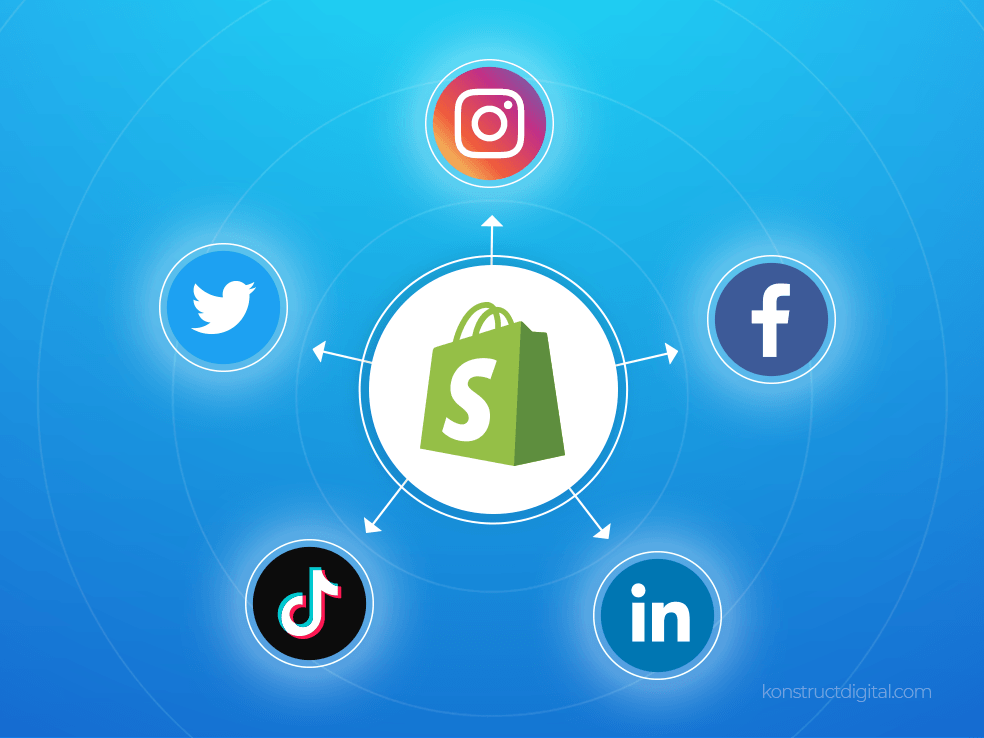
From our blog, The Ultimate Hyperlocal SEO Guide For Local Businesses:

Correct Sizing & Design
Now that you have a better idea of what types of images to create, you must understand the importance of the little details in the image.
For starters, you need to know the width of your blog section. If you design your blog images in Photoshop on a large screen, but your blog section is, say, 600px, you might accidentally use smaller fonts or smaller graphics as they look bigger on your computer. Unfortunately, if you do this, your audience may have a hard time reading and analyzing the small details of your image; subsequently, they won’t use your image in their blog.
Here’s an example of one of our custom images that I think needs a little tweaking. Take a look at the image and see if you can point out what would make the graphic better:
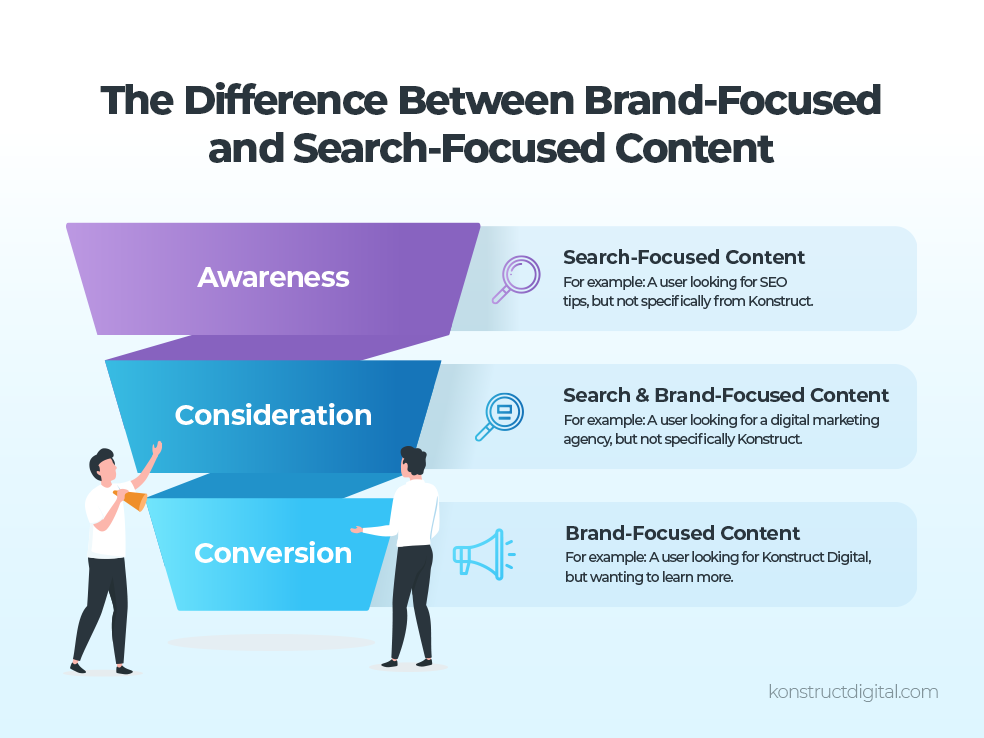
Did you see it? The text under “Search-focused content”, “Search & Brand-Focused Content”, and “Brand-Focused Content” is so small. If someone were to read this content (like you right now), they’re likely to look past the image because it requires too much effort to read. Is that how you felt? I thought so.
Overall, when designing your images, my advice to you is the following:
- Make the image square or rectangle (rectangle usually looks better though)
- Make sure the text in the image is legible and easy to read
- Double-check the size of your blog section and cater your image to that size
- Make data-driven images (stats, infographics, etc.)
Encourage Linking
So now that we’ve determined our keywords and have designed nice images – how do we encourage linking?
At Konstruct, what has worked really well for us is to use our fancy custom widget to encourage linking. Here’s what working smarter, not harder, looks like:
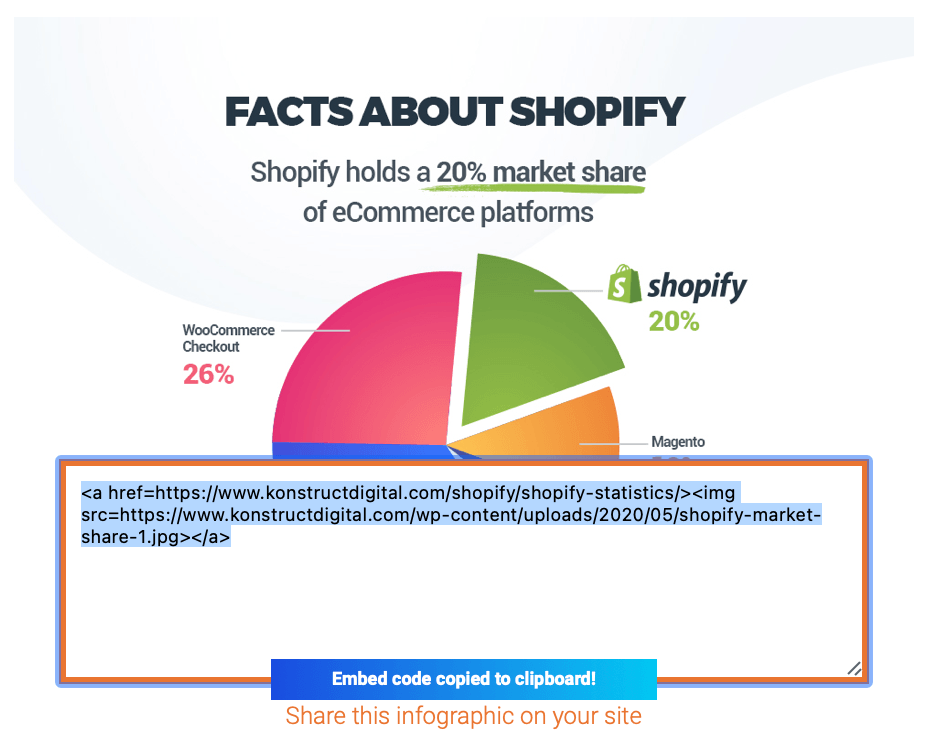
So, when people go through our articles and decide they want to use our image, they can easily click “share this infographic on your site” and copy and paste the code block. The nice part about doing this is we’re basically giving users a directive, saying, “Hey, you’re allowed to share this on your site.”, which helps eliminate any back and forth conversation.
The downside to NOT having this code is if people borrow your images, you have less control over how they might choose to attribute the image to you.
If you’re thinking, “hey, that embedded code is a neat idea”, first, thanks. Second, make sure your code links to the page, not the image. This will help make sure that the SEO value of the link is passing through to the page. If someone links to your page, it can help the article and image rank better. If someone only links to your image, it’ll just help the image rank better. We’re just here trying to kill two birds with one stone.
Supporting Content
When you’re designing your image, make sure it fits perfectly in the section you’re writing about. I know, that sounds quite obvious. But, it’s very important to Google.
Google’s going to see your image and see how it relates to the surrounding content. So, make sure you include the right image in the right place in the article for the right type of search query.
Link Outreach
Let’s say your graphics have been designed, content has been written, and your article has been published (great job!) for a few months; now it’s time to look at who’s linking to your images.
There are a couple of ways you can do this:
- Use a tool like Semrush
In Semrush, you can check if any specific links are coming in to certain images or pages.
- Use Google reverse image search
Take your image, copy the URL, and put it into Google reverse image search and look at all of the pages coming up in the search results. For example:
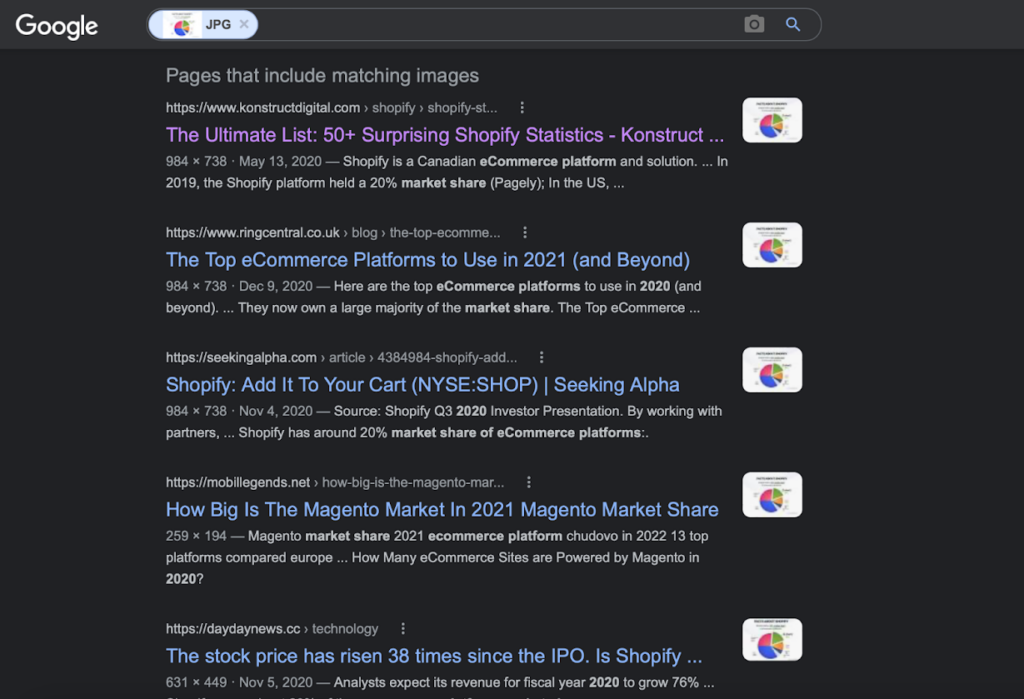
You can see that these folks have linked to our image at some point. As standard practice, if any articles pop up on the SERP but don’t have the image icon beside them, take a peek through the article to make sure they’re properly attributing you.
The best way to track all of this information is to keep an ongoing spreadsheet and add the image and URL of the site borrowing your image. That way, if you stumble upon someone borrowing your image, you can double-check your spreadsheet and act accordingly. If you find out they aren’t attributing you, craft some sort of message like, “Hey, we noticed you’re using our image. That’s totally okay, as long as you attribute the image to us. Can you please add this piece of code to your article? Thanks!”
As a standard rule of thumb, assign yourself a task about once a month or once a quarter, where you reverse search your images and see who’s using your custom images.
Performance in Search
Lastly, it’s important that you keep tabs on how well your images perform in search. Because you’ve identified your image with a target keyword, check the searches to see how your images are doing. If you find that they’re not doing well, it might be time to tweak the content, image or SEO. This can include image file names and alt text. You can potentially get your article and the image to perform better by doing this.
Image Link Building Seems Like a Lot of Work, Can Someone Do it For Me?
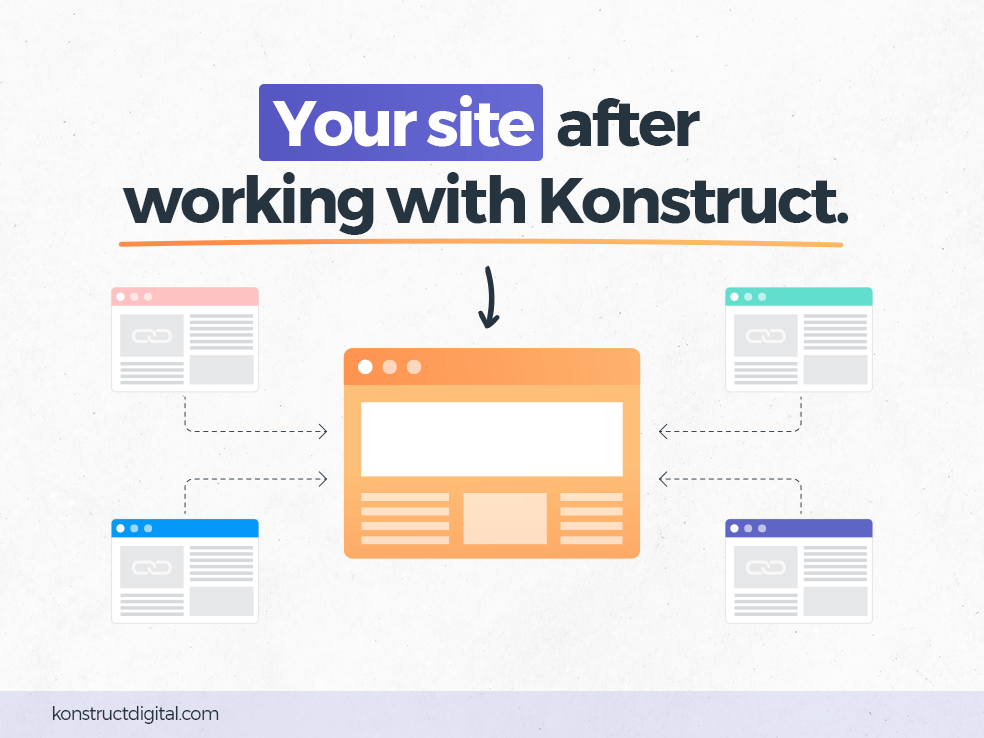
At Konstruct, we eat, sleep and breathe digital marketing strategies. From content creation and designing custom images to SEO and developing the embedded code onto your page, we’ve got it covered. If marketing were baseball, we’d be the team winning every game because we have all star experts covering every base.
If you’re feeling bombarded with information, reach out! There’s nothing we love more than helping businesses reach their goals. Plus, we’re competitive as heck, as you can probably tell, so you’ll take no L’s on our watch. Contact us today! We can’t wait to meet with you.



